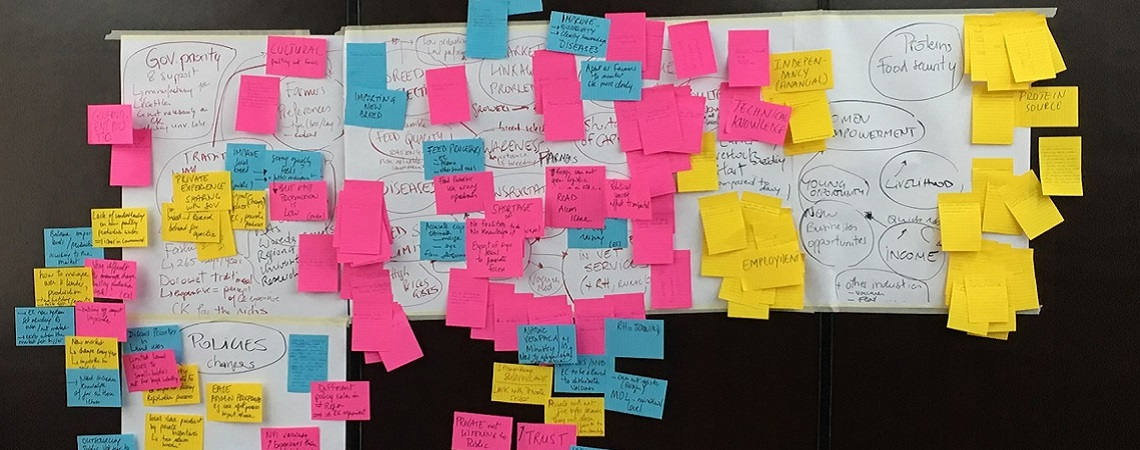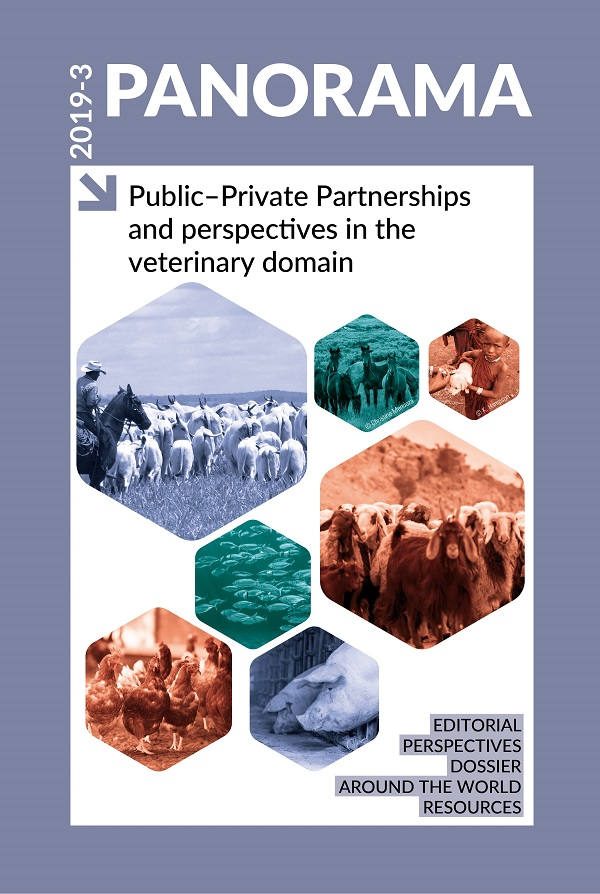Dossier Posted on 2021-05-26 10:32:24
Engaging the actors to ensure impacts of public–private partnerships
Participatory impact evaluation
Keywords
Authors
Mariline Poupaud(1), Bernard N’Bocho Guessan(2), Isabelle Dieuzy-Labaye(3) & Marisa Peyre(4)*
(1) PhD student at the French Agricultural Research Centre for International Development (CIRAD), Montpellier, France and at the University of Liège, Belgium.
(2) PhD student at Robert Koch Institute, Germany, and Laboratoire National d’Appui au Développement Agricole (LANADA), Côte d’Ivoire.
(3) World Organisation for Animal Health (OIE).
(4) Animal, Health, Territory, Risks, Ecosystems (ASTRE) Joint Research Unit, French Agricultural Research Centre for International Development (CIRAD), Montpellier, France.
* Corresponding author: marisa.peyre@cirad.fr
The designations and denominations employed and the presentation of the material in this article do not imply the expression of any opinion whatsoever on the part of the OIE concerning the legal status of any country, territory, city or area or of its authorities, or concerning the delimitation of its frontiers and boundaries.
The views expressed in this article are solely the responsibility of the author(s). The mention of specific companies or products of manufacturers, whether or not these have been patented, does not imply that these have been endorsed or recommended by the OIE in preference to others of a similar nature that are not mentioned.
A participatory evaluation method
Participatory impact evaluation promotes self analysis of how programmes are built and how actors adopt and engage with them to attain impacts [2]. Actors can share their perception of the programmes and impacts and co-design the corrective actions needed to ensure that expected impacts are reached [3]. The OIE and CIRAD adapted and are applying this method to three case studies, in Ethiopia, Indonesia and Paraguay.
Evaluating the added value of PPP: the case study of Ethiochicken in Ethiopia
Ethiochicken is a chicken-producing company that partners with the Government of Ethiopia to ensure the delivery of its products to smallholder farmers. PPP was essential in achieving impacts (including societal impacts such as improved education, empowerment of women and employment opportunities). This PPP contributes to building trust between private producers and Veterinary Services (VS), strengthening VS activities.
Constraints that affect business have been identified, linked to issues with accessing foreign currency and the limited training in poultry production in Ethiopia. Public and private stakeholders joined forces during participatory workshops to co-develop scenarios to overcome such constraints, satisfying both public and private parties.
Impact of the evaluation itself
By engaging directly with all the different actors, the participatory impact evaluation has an explicit goal of triggering positive changes in the partnership [4]. This method has proven relevant to evaluating the impact of PPPs in the veterinary domain. It has already been used to characterise PPP contributions in different types of impact and benefits, as presented in The OIE PPP Handbook.
http://dx.doi.org/10.20506/bull.2019.3.3048

References
- Galière M., Peyre M., Muñoz F., Dehove A., Roger F. & Dieuzy-Labaye I. (2019). – Typological analysis of public-private partnerships in the veterinary domain. PLoS ONE, 14 (10) e0224079. https://doi.org/10.1371/journal.pone.0224079.
- Douthwaite B., Kuby T., van de Fliert E. & Schulz S. (2003). – Impact pathway evaluation: an approach for achieving and attributing impact in complex systems. Agric. Syst., 78 (2), 243–265. https://doi.org/10.1016/s0308-521x(03)00128-8.
- Antoine-Moussiaux N., Peyre M., Bonnet P., Bebay C., Bengoumi M. & Tripodi A. (2017). – The value chain approach in One Health: conceptual framing and focus on present applications and challenges. Front. Vet. Sci., 4, 206. https://doi.org/10.3389/fvets.2017.00206.
- Barret D., Blundo Canto G., Dabat M.H., Devaux-Spatarakis A., Faure G., Hainzelin E., Mathé S., Temple L., Toillier A., Triomphe B. & Vall E. (2017). – Guide méthodologique ImpresS. Évaluation ex post des impacts de la recherche agronomique dans les pays du Sud. Centre de coopération internationale en recherche agronomique pour le développement (CIRAD). https://doi.org/10.19182/agritrop/00005.











